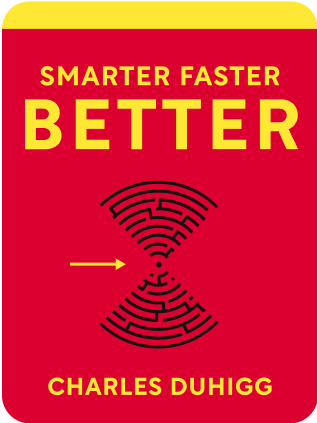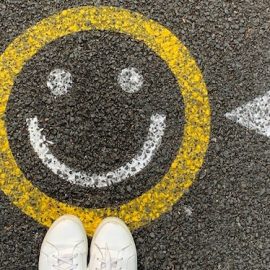

This article is an excerpt from the Shortform book guide to "Smarter Faster Better" by Charles Duhigg. Shortform has the world's best summaries and analyses of books you should be reading.
Like this article? Sign up for a free trial here .
Feeling paralyzed by too much information? Would you like to get more done by learning how to absorb information better?
In Smarter Faster Better, Charles Duhigg shares insights on how to absorb information better. Ultimately, this results in greater productivity. He addresses information blindness and provides examples of how others interact with data effectively.
Read more to learn how to absorb information better and get more done.
A Powerful Force for Change
One method you can use to boost your personal productivity is learning how to use data productively.
Thanks to improvements in technology and the omnipresence of the Internet, we have access to vast amounts of data, both about ourselves and about the world at large. We can measure and track everything from our spending habits, to our calorie intake, to the number of steps we take every day.
If we make the most of this data—if we learn how to absorb information better—it can be a powerful force for change. We can track patterns, identify areas for improvement, and use the data to drive personal growth. We can even use data to help us solve problems and make better decisions. However, the idea of “making the most of the data” is easier said than done. While having access to lots of data can be very useful, it can cause problems.
Studies have shown that if we’re presented with too much data at once, we can enter a state called “information blindness.” Our minds simply cannot cope with the huge amount of data they’re being asked to process—so, we stop trying. We either start to ignore some of the data, misinterpret the data, or become so overwhelmed that we refuse to engage with it at all.
If you want to avoid information blindness and effectively absorb the data that’s necessary for your work, you can’t passively allow that data to wash over you. If you do, the brain won’t process it thoroughly. Instead, you have to interact with the data in a meaningful and effective way.
How to Absorb Information Better by Doing Something With It
If you want to learn how to absorb information better, you have to do more than just look at it: you have to do something with it, too. It almost doesn’t matter what you do, as long as you do something.
This “doing something” can take many forms, including:
- Writing the data out by hand
- Plotting the data on a graph
- Explaining the data to another person
- Incorporating the information into your daily life—for instance, if you learn a new word, forcing yourself to use it in a sentence
- Asking yourself questions about the data and making choices based on your answers. For example, if the data is a long and complicated wine list, you could ask yourself, “do I want red or white? What is my price range?” and then choose a wine accordingly. Breaking large amounts of data down into smaller chunks like this makes it easier to digest.
The process of interacting with data in this way is sometimes referred to as “creating disfluency.” “Creating disfluency” means adding extra effort to the process of absorbing information, thus making this process a little more difficult.
Adding this element of effort and difficulty forces you to pay extra attention to the data as you take it in. To fully absorb the data, you have to look at it closely and think about it deeply. This ultimately helps the information to stick in your brain; you become so engrossed in it that you automatically process it in a more thorough way.
Example: South Avondale School, Cincinnati
In the mid-2000s, South Avondale was one of the worst-performing elementary schools in Ohio. Its test scores were very low. For years, the city of Cincinnati had flooded the school with resources to try to improve it. This included giving teachers software that used huge amounts of data to track the performance of each student. The software collected data on everything from participation levels in class, to test scores, to each child’s attendance record. Teachers were encouraged to use this data to ascertain each student’s specific needs and the assistance they required.
The city felt that if teachers could learn how to absorb information better, it could help to turn the school around.
Unfortunately, this simply wasn’t happening. The vast majority of South Avondale’s teachers confessed that they hardly ever looked at the data, let alone used it. So, in 2008, the city decided it was time for a new approach. They devised a program called the Elementary Initiative (EI.)
What Was the Elementary Initiative?
The EI focused on helping teachers to effectively use the data at their disposal. It tried to encourage them to actually interact with the data. Surprisingly, this didn’t involve looking at the online data dashboards that the city and the school had spent so much time creating. Instead, the EI introduced a new approach to data analysis. Each school had to have a “data room,” a room where teachers could go to interact with data on their students.
Teachers were encouraged to visit the room to write down data such as test scores and attendance on index cards. Then, they had to sort those index cards – and thus the data – into different groups. For instance, they could group cards based on which students were excelling and which were struggling.
The teachers were also encouraged to use the data to draw graphs charting student progress. They were also told to run experiments based on what the data showed – for example, investigating whether placing students in smaller reading groups could boost their test results.
Using the EI to Create Disfluency
Did South Avondale teachers learn how to absorb information better? At first, they were reluctant to use the data room; it seemed like a waste of time, especially considering they already had all of the data on their easier-to-use computer systems.
However, they eventually realized that visiting the room and interacting with the data was helping them to spot patterns they’d otherwise have missed. They could then take steps to change these patterns.
For example, one teacher found that some of his students struggled with learning fractions, but had easily got the hang of pronoun use. Another teacher found that his students were in the exact opposite situation: struggling with pronouns, but excelling at fractions. The teachers swapped lesson plans, and in both classes, students’ test results improved.
Over time, it became clear that the EI was highly effective. By the 2010 to 2011 school year, South Avondale was transformed. Student performance had increased drastically; test scores had shot up.
This success was down to the fact that the EI harnessed the power of disfluency. The process of working with the data in such a hands-on way had helped it stick in the teachers’ minds. They were now able to recall the data effectively, analyze it much more thoroughly, and spot areas of strength and weakness in their students. They could then act on the data to help their students to progress.
People who are highly productive have learned how to absorb information better. You, too, can learn this important skill and get more done every day.

———End of Preview———
Like what you just read? Read the rest of the world's best book summary and analysis of Charles Duhigg's "Smarter Faster Better" at Shortform .
Here's what you'll find in our full Smarter Faster Better summary :
- Why becoming more productive isn’t about working longer hours or constantly pushing yourself to do more
- The 8 principles for improving productivity
- How to create a work culture in which each employee is truly valued






